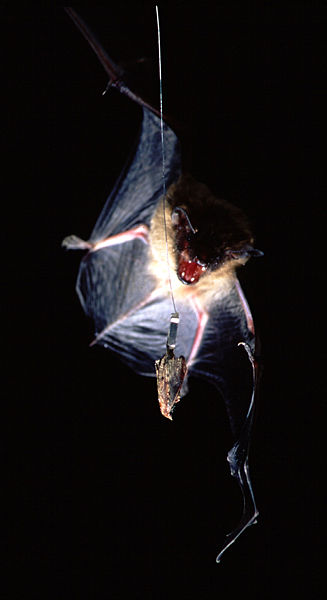Bats and dolphins may appear to be very different types of mammals - after all one of them flies and the other swims - but it turns out they have both, independently evolved exactly the same gene that allows them to use sound as a way of visualising the world around them.
 Both bats and dolphins hunt using echolocation. They emit bursts of high-pitched noise and listen carefully as the sound waves bounce back to them. They use these echoes to build a detailed mental picture of their environment and - hopefully - to pinpoint other animals that will become their dinner.
Both bats and dolphins hunt using echolocation. They emit bursts of high-pitched noise and listen carefully as the sound waves bounce back to them. They use these echoes to build a detailed mental picture of their environment and - hopefully - to pinpoint other animals that will become their dinner.
A vital part of both the bat and dolphin echolocation systems is a series of tiny, stiff hairs in their ears that vibrate and detect very high-frequency sounds and are made from a protein called prestin.
An international team of researchers have published two papers in the journal Current Biology, uncovering the remarkable fact that the prestin gene has undergone precisely the same changes in DNA sequence in distantly related bats and dolphins.
Many other groups of species have evolved to look remarkably similar despite not being closely related, such as modern-day dolphins and ancient, extinct reptiles called ichthyosaurs. But this is the first time that so-called "convergent evolution" has been detected at the molecular level. The research team were able to build a genetic family tree showing how the changes in the prestin gene built up identically over time in both bats and dolphins.
It suggests that there may only be one way that mammals can physically evolve the necessary apparatus to echolocate. It is remarkable that many species of bat and cetaceans - including whales and dolphins that can echolocate - have taken the same evolutionary pathway towards an identical genetic solution to the challenge of seeing with sound.
- Previous How sperm get turned on
- Next The Fish with wonky mouths










Comments
Add a comment